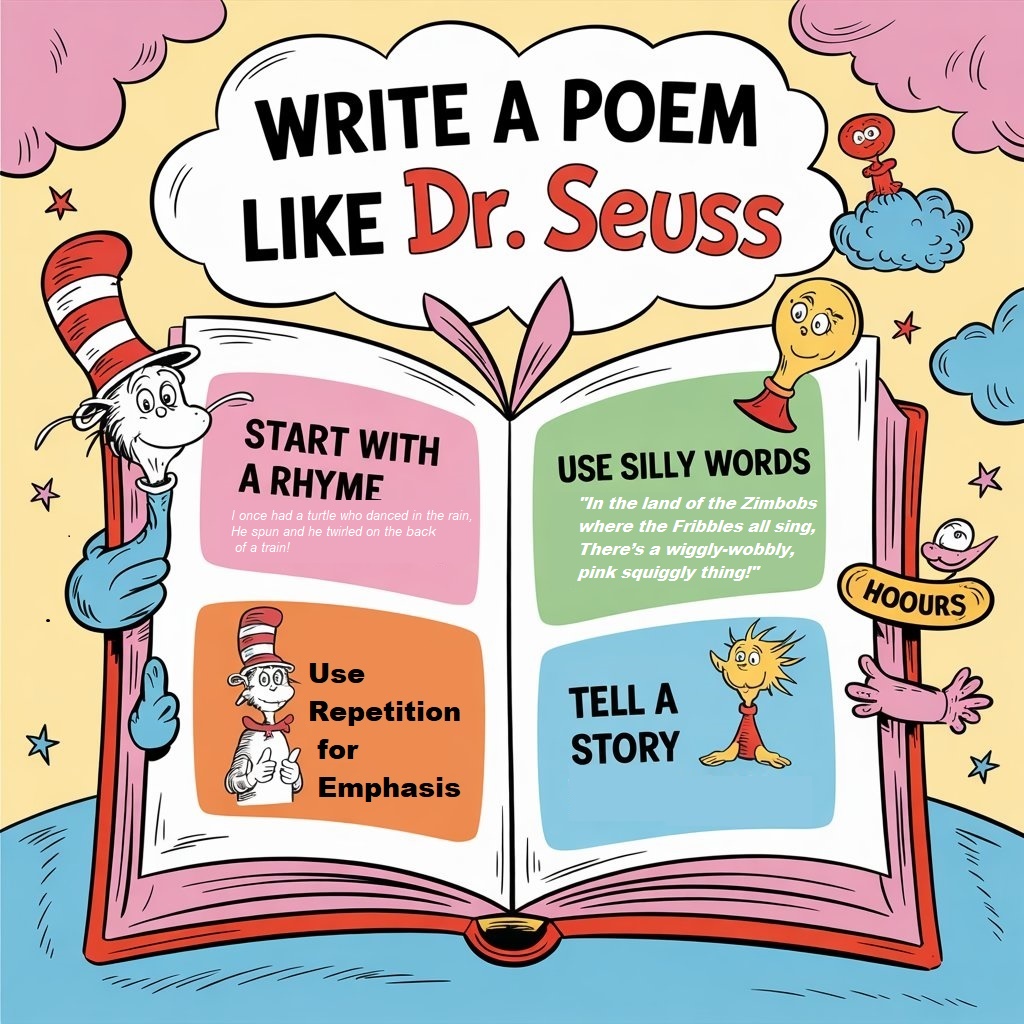How to write a poem like Dr. Seuss
Dr. Seuss is one of the most beloved children’s poets ever. He is known for his wild imagination, catchy rhymes, and playful storytelling. His poems bounce off the tongue, transport readers to whimsical worlds, and teach valuable lessons while being ridiculously fun to read! But how did he do it? And more importantly, how can you write like Read More









 Evan John
Evan John